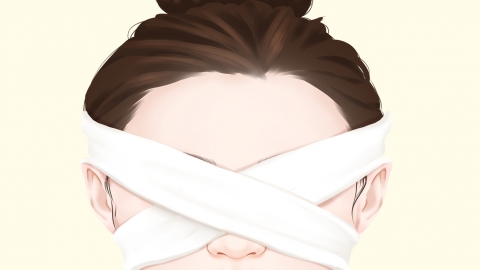What are the symptoms of night blindness?
Under normal circumstances, the main symptoms of night blindness include blurred vision in dim light, difficulty walking at night, sudden decline in vision at dusk, prolonged dark adaptation time, and narrowed visual field. If discomfort symptoms appear, it is recommended to seek timely diagnosis and treatment at a正规 hospital. Detailed analysis is as follows:
1. Blurred vision in dim lighting
Night blindness is often caused by vitamin A deficiency or abnormal function of retinal photoreceptor cells, leading to insufficient synthesis of photoreceptive substances in low-light environments and thus impairing the ability to perceive weak light, resulting in blurred vision. Patients may experience hazy vision at night or in dimly lit indoor environments, with difficulty discerning details.

2. Difficulty walking at night
Due to decreased vision in dim lighting, patients cannot clearly judge road conditions or the positions of obstacles, making them prone to missteps or collisions at night. They may rely on lighting or assistance from others when walking and often feel unsafe or even fear going out at night alone.
3. Sudden decline in vision at dusk
Dusk brings gradually decreasing light, which normal eyes can adapt to gradually. However, patients with night blindness, due to impaired photoreceptor function, cannot adjust promptly to changing light conditions, leading to a sudden drop in vision. Vision becomes significantly worse compared to daytime or bright light conditions, and in severe cases, patients may barely see their surroundings.
4. Prolonged dark adaptation time
When moving from a bright environment to a dark one, normal individuals can adapt quickly and see objects within a short time. However, due to slow photoreceptor response, patients with night blindness experience significantly prolonged dark adaptation times. They must remain in the dark for an extended period before barely discerning a few object outlines.
5. Narrowed visual field
As the condition progresses and retinal dysfunction expands, the visual field becomes narrowed. Patients can only see objects directly ahead, while objects on either side become difficult to detect, as if viewing the world through a "tube," resulting in a reduced perception of the surrounding environment.
If you experience any of the above symptoms, you should avoid staying in dimly lit environments or engaging in solo activities for prolonged periods in daily life. Prepare adequate lighting when going out at night. In terms of diet, increase your intake of vitamin A-rich foods such as animal liver, carrots, and spinach.









